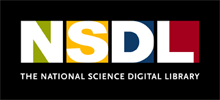
National Science Digital Library (NSDL) of the United States is an open-access online digital library and collaborative network of disciplinary and grade-level focused education providers operated by the Institute for the Study of Knowledge Management in Education. NSDL's mission is to provide quality digital learning collections to the science, technology, engineering, and mathematics (STEM) education community, both formal and informal, institutional and individual. NSDL's collections are refined by a network of STEM educational and disciplinary professionals. Their work is based on user data, disciplinary knowledge, and participation in the evolution of digital resources as major elements of effective STEM learning.
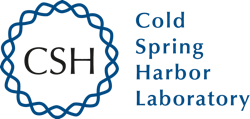
Cold Spring Harbor Laboratory (CSHL) is a private, non-profit institution with research programs focusing on cancer, neuroscience, plant biology, genomics, and quantitative biology. It is located in Laurel Hollow on Long Island, New York.
Minimally invasive education (MIE) is a form of learning in which children operate in unsupervised environments. The methodology arose from an experiment done by Sugata Mitra while at NIIT in 1999, often called The Hole in the Wall, which has since gone on to become a significant project with the formation of Hole in the Wall Education Limited (HiWEL), a cooperative effort between NIIT and the International Finance Corporation, employed in some 300 'learning stations', covering some 300,000 children in India and several African countries.
Cure4Kids is a web-based education project of St. Jude Children's Research Hospital. Its goal is to help health professionals in countries with limited resources improve the survival rates of children with life-threatening illnesses, including pediatric cancer, sickle cell disease, and HIV/AIDS. The Cure4Kids website provides access to online seminars and conferences with audio narration, presenting current research and best practices, clinical and scientific advances, as well as case studies and treatment analyses. The website also provides access to consultation and mentoring through web-conferencing technology, training for management and analysis of clinical patient information, electronic full-text books and journals, and online courses. The Cure4Kids site contains over 2,000 seminars, courses and conferences. All material can be used and downloaded for reference and educational purposes. Cure4Kids is funded by St. Jude and ALSAC, the American Lebanese Syrian Associated Charities.
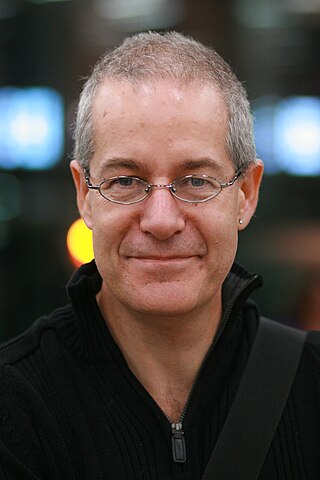
Massimo Pigliucci is an Italian-American philosopher and biologist who is professor of philosophy at the City College of New York, former co-host of the Rationally Speaking Podcast, and former editor in chief for the online magazine Scientia Salon. He is a critic of pseudoscience and creationism, and an advocate for secularism and science education.
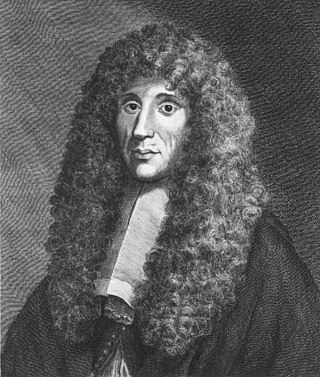
A biologist is a scientist who conducts research in biology. Biologists are interested in studying life on Earth, whether it is an individual cell, a multicellular organism, or a community of interacting populations. They usually specialize in a particular branch of biology and have a specific research focus.

The Naked Scientists is a one-hour audience-interactive science radio talk show broadcast live by the BBC nationally on BBC Radio 5 Live, and internationally on ABC Radio National, Australia; it is also distributed globally as a podcast.
The Animal Diversity Web (ADW) is a non-profit group that hosts an online database site that collects natural history, classification, species characteristics, conservation biology, and distribution information on species of animals. The website includes photographs, sound clips, and a virtual museum.
Podcasting refers to the creation and regular distribution of podcasts through the Internet. Podcasts, which can include audio, video, PDF, and ePub files, are subscribed to and downloaded through web syndication or streamed online to a computer or mobile device. Subscribers are then able to view, listen to, and transfer the episodes to a variety of media players, or podcatchers. Though similar to radio, there is no larger regulatory group or oversight with podcasts. Instead, podcasts simply consist of the creators and their listeners. As the technology gained popularity in the early 2000s, the uses of podcasting grew from simply the delivery of content to also creative and responsive purposes.
Chris Smith - "the Naked Scientist" - is a British consultant virologist and a lecturer based at Cambridge University. He is also a science radio broadcaster and writer, and presents the Naked Scientists, a programme which he founded in 2001, for BBC Radio and other networks internationally, as well as 5 live Science on BBC Radio 5 Live.
John Alcock was an American behavioral ecologist and author. He was the Emeritus' Professor in the School of Life Sciences at Arizona State University.
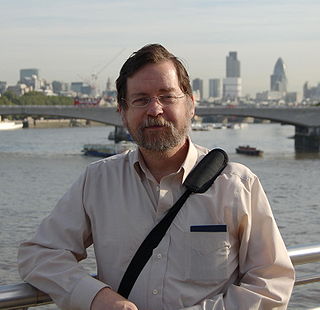
Paul Zachary Myers is an American biologist who founded and writes the Pharyngula science blog. He is associate professor of biology at the University of Minnesota Morris (UMM) where he works in the field of developmental biology. He is a critic of intelligent design and the creationist movement and other pseudoscientific concepts.
The Paper Project is a fusion project that blends art, science, and technology into engaging 2D and 3D experiences.
The National Institute for Mathematical and Biological Synthesis is a research institute focused on the science of mathematics and biology, located on the University of Tennessee, Knoxville, campus. Known by its acronym NIMBioS, the Institute is a National Science Foundation (NSF) Synthesis Center supported through NSF's Biological Sciences Directorate via a Cooperative Agreement with UT-Knoxville, totaling more than $35 million over ten years.

The United States National Evolutionary Synthesis Center (NESCent) is a scientific research center in Durham, North Carolina. Known by its acronym NESCent, the center’s goal is to promote collaborative, cross-disciplinary research in evolutionary biology.
The Center for Study of Gene Structure and Function is a consortium of fifty-three researchers. It is based at Hunter College in Manhattan. It focuses on cross-disciplinary and translational research by promoting dialogue and cooperation among scientists working in diverse biomedical research fields. It is funded by the Research Centers in Minority Institutions (RCMI) program of the National Center for Research Resources(NCRR) of the National Institute of Health (NIH) Since its establishment in 1985, the NIH has awarded the Gene Center over $38 million in federal grants.

Kylie Sturgess is a past President of the Atheist Foundation of Australia, an award-winning blogger, author and independent podcast host of The Token Skeptic Podcast. A Philosophy and Religious Education teacher with over ten years experience in education, Sturgess has lectured on teaching critical thinking, feminism, new media and anomalistic beliefs worldwide. She is a Member of the James Randi Educational Foundation (JREF) Education Advisory Panel and regularly writes editorial for numerous publications, and has spoken at The Amazing Meeting Las Vegas, Dragon*Con (US), QED Con (UK). She was a presenter and Master of Ceremonies for the 2010 Global Atheist Convention and returned to the role in 2012. Her most recent book The Scope of Skepticism was released in 2012. She is a presenter at Perth's community radio station RTRFM, and a winner at the 2018 CBAA Community Radio Awards in the category of Talks, with the show Talk the Talk In 2020 she was in the final eight in the Three-Minute Thesis (3MT) Asia-Pacific virtual showcase.

The iPlant Collaborative, renamed Cyverse in 2017, is a virtual organization created by a cooperative agreement funded by the US National Science Foundation (NSF) to create cyberinfrastructure for the plant sciences (botany). The NSF compared cyberinfrastructure to physical infrastructure, "... the distributed computer, information and communication technologies combined with the personnel and integrating components that provide a long-term platform to empower the modern scientific research endeavor". In September 2013 it was announced that the National Science Foundation had renewed iPlant's funding for a second 5-year term with an expansion of scope to all non-human life science research.
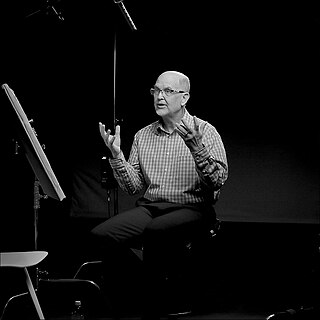
Charles J. Kazilek III is an American-born science communicator, educator, and artist. His K-12 outreach work involves the globally successful Ask A Biologist website, which he founded in 1997. Kazilek is also an artist who works in both the real and virtual worlds of visual arts. His art has been inspired by his background in microscopy and includes the Paper Project, Scanning Light Photomacrograhy, and his novel approach to illustrating insects which includes two field guides on tiger beetles.









